Fall is one of my favorite times for gathering wild food and medicine, and foraging rose hips has a lot to do with that! Wild rose and rose hips are foraged at different times of the year, with rose hip season beginning in the autumn. This post will look at both the flowers and the fruit of members of the rose family, so keep the blooms in mind for the spring if you’re reading about rose hips in the fall.
Wildcrafting Weeds
If you want to learn more about the edible and medicinal weeds that surround us and how to use them, check out my eBook: Wildcrafting Weeds: 20 Easy to Forage Edible and Medicinal Plants (that might be growing in your backyard)!
About Wild Rose & Rose Hips
Roses are members of the Rosa spp., of which there are over 300 different types of wild and cultivated species.
Although I will be focusing on foraging for wild roses and rose hips, cultivated roses that haven’t been sprayed with chemicals share all the same benefits and uses as their wild counterparts.
Where and When to Find Wild Rose
From the Australian outback to Northern Canada, species of wild rose can be found worldwide in a wide variety of natural habitats.
Wild roses typically grow in fields, disturbed areas, or thickets as well as along woodland edges, roadsides, and trails.
Wild rose flowers bloom in the spring and summer, while rose hips begin to appear in early autumn and throughout the winter.
If you have your own rose bushes just remember that hips will only form where the flower was, so don’t cut all of the flowers if you want rose hips.
When to Find Rose Hips
Rose hips are the fruit of the rose plant and appear after the blooms have dropped from the plant. Rose hips ripen in the fall and throughout early winter.
If you live where winters are milder you may be able to harvest rose hips well into the winter season.
Learn more about year round foraging in my guides about fall foraging and winter foraging!
Identifying Wild Rose
Considering how many hundreds of rose species there are growing in the wild, it can sometimes be difficult for a beginner forager to differentiate between one type of flower and another.
However, there are a couple of common features that help with the identification process. All roses have curved thorns and alternate, pinnate leaves with 3-9 leaflets; the flowers are symmetrical and are typically pink or white.
Some species of wild rose, such as multiflora rose (Rosa multiflora) and dog rose (Rosa canina) are climbing vines. Other varieties, such as Virginia rose (Rosa virginiana) or rugosa rose (Rose rugosa) are more shrub-like in appearance.
Identifying Rose Hips
Rose hips are the fruit of roses, replacing the freshly fallen flowers when the temperature begins to grow colder.
They are red to orange in color, oblong or round in shape, often with small wisps of “hair” protruding from the bottom of the rose hip.
Rose hips come in all shapes and sizes, from large to small. Some rose hips, such as those from the dog rose, are more oblong in shape.
Others are large and round, such as those from the rugosa rose.
Harvesting Wild Rose
When harvesting wild or cultivated roses, look for newly opened blossoms whenever possible. The flowers should be fresh and fragrant, without showing signs of wilting. A sturdy pair of gardening gloves will protect you from any painful pricks caused by thorns.
Once the roses have been harvested, they can be dried whole or separated into individual petals. I use my handmade flower drying screen but any version, store-bought or otherwise, is incredibly useful for drying purposes.
As with any foraging project, make sure the area you’re covering hasn’t been sprayed with chemicals (including those picked in your own backyard!).
Avoid using commercially cultivated roses, as they have almost certainly been sprayed with chemicals to preserve their appearance.
Harvesting Rose Hips
Begin harvesting rose hips in the fall, the longer the rose hips grow on the plant the sweeter they become. It’s ok if they are a bit wrinkly!
Look for red to orange (no green) rose hips that easily detach from the stem, you shouldn’t have to tug much to harvest them. Just like with wine grapes, rose hips become sweeter and more flavorful if they’re exposed to frost before being harvested.
All rose hips from any type of rose, even cultivated varieties, are edible and full of nutrients and have numerous medicinal uses.
Once harvested, rose hips can be used fresh, kept frozen, or dried in a dehydrator or on a drying screen. Large rose hips can be cut open to remove the seeds and irritating hairs before drying, if you prefer.
Wild Rose & Rose Hip Look-alikes
Wild roses (and cultivated roses) have no toxic look-alikes, which makes them ideal for the beginner forager. While there are some ornamental flowers which are similar in appearance to wild roses, they don’t pose any kind of health threat.
There really aren’t any rose hip look-alikes, especially if you know that they came from a rose plant. They can sometimes resemble hawthorn berries, which are not toxic and have edible and medicinal uses as well.
Edible Uses of Wild Rose
High in flavonoids and antioxidants, rose petals make elegant and colorful additions to salads and desserts (especially sugared roses, which always look so beautiful).
I’m particularly keen on homemade rose petal jelly (add a teaspoon to sparkling wine or pair it with a mild soft cheese and a baguette) and I can never have enough good things to say about making rose water from fragrant rose petals.
Looking for other ways to enjoy a floral harvest? Rose petals can be used to infuse honey, mead, vinegar, wine, and liquors.
Edible Uses of Rose Hips
Rose hips are one the highest plant sources of vitamin C, particularly when eaten fresh or as minimally processed as possible. Ripe rose hips have a tart and sweet flavor similar to crab apples (which isn’t surprising, as they’re in the same family!).
Rose hips have threadlike hairs inside and around the seeds that can be irritating to the throat and stomach if ingested. Before serving anything made with rose hips make sure to pass it through a coffee filter, several layers of cheesecloth, or another equally fine material.
If you will be consuming whole rose hips in something that cannot be strained, such as in cookies or jam, be sure to cut them open and scoop out the seeds and irritating hairs before using. This is easiest with larger rose hips.
The flavor of rose hips is right at home in cocktails and other libations, like this recipe for a rose hip whiskey smash. You can also make a rose hip shrub, which can be added to kombucha or cocktails as desired.
For more rose hip-related inspiration, check out my post with over 60 rose hip recipes!
Medicinal Uses of Wild Rose
There’s a good reason why roses show up so often in skin care (other than their gorgeous floral scent), rose petals are cooling, astringent, anti-inflammatory, and antimicrobial. Use them in skin-soothing rose lotion bars, rose petal salve, rose hip facial oil, or wild rose and yarrow soap.
Those same healing properties can also boost the immune system during cold and flu season and can help digestive upset when taken as a tonic.
Rose petals are safe for children to consume, and can easily be made into tea or gummies to be taken at the onset of symptoms.
Medicinal Uses of Rose Hips
Rose hips are considered highly medicinal thanks to a potent combination of vitamin C and antioxidants, which is why I like to include them when making my immune-boosting herbal tea blend or a simple cup of rose hip tea.
Rose hips are perfect to use in homemade syrup or you can infuse them into honey, oil, vinegar, or even alcohol to utilize their medicinal benefits. See my recipe for an infused wine with reishi mushrooms and rose hips.
Rose hip seed oil is a gentle and soothing moisturizer for dry skin, one of the many reasons I like to add it to my homemade rose hip soap, rose hip face serum and lip balm for soothing dry lips.
Where to Buy Dried Rose Hips & Rose Petals
If you can’t find any wild rose or rose hips, or if they’re not in season, you can always buy dried rose petals or dried rose hips from Mountain Rose Herbs (my favorite place to buy high quality, organic herbs).
Foraging for rosehips and wild rose is easy and rewarding. I hope you found this post helpful in your wildcrafting adventures!











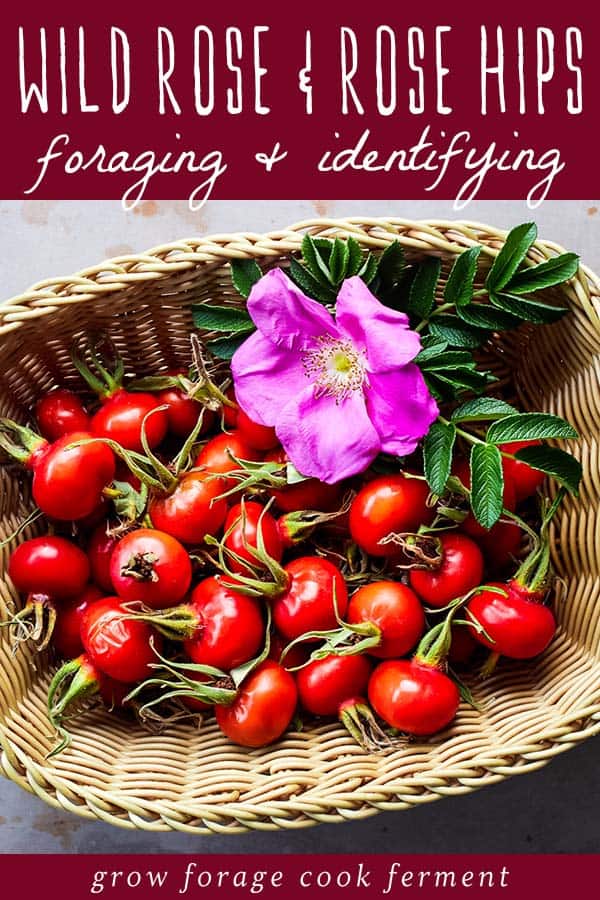
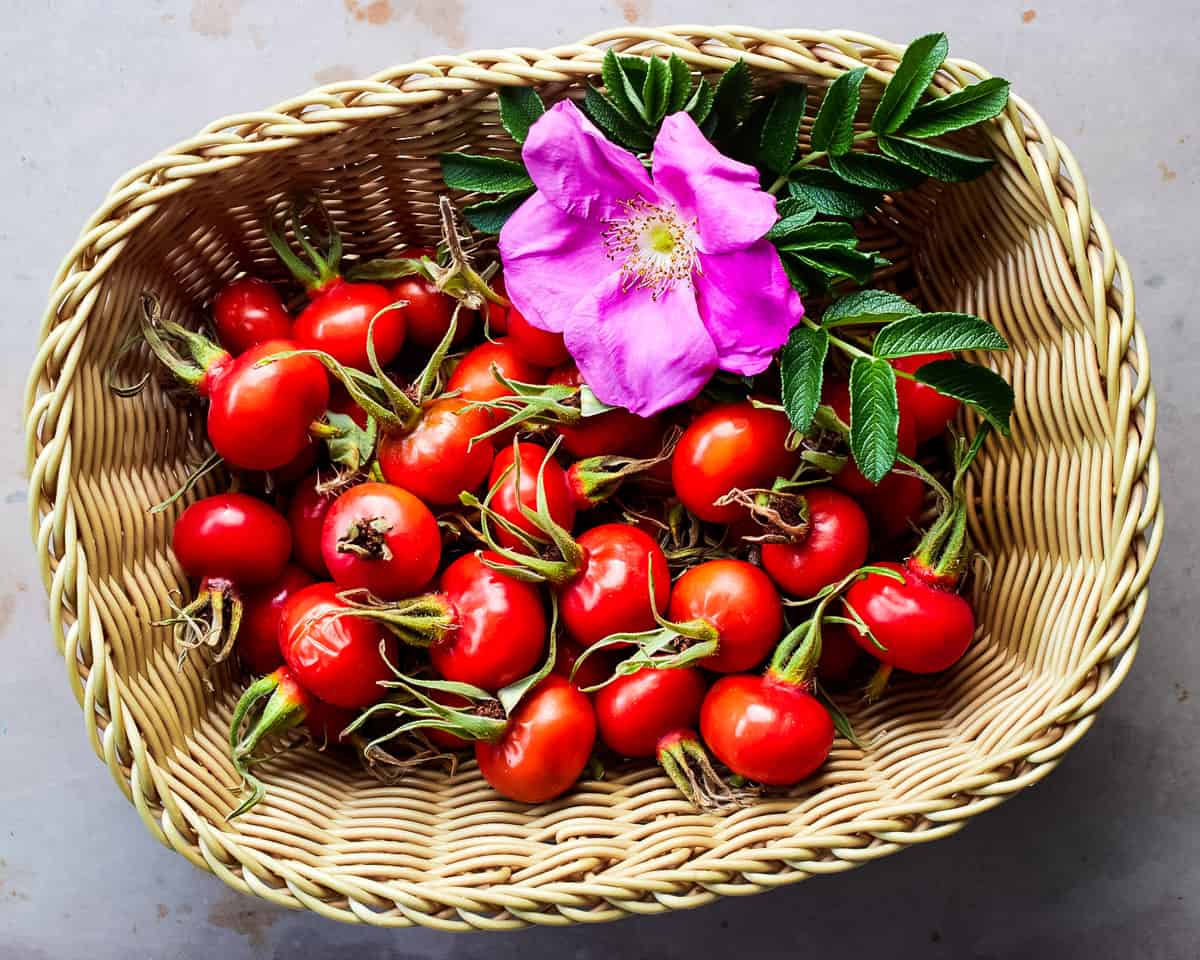
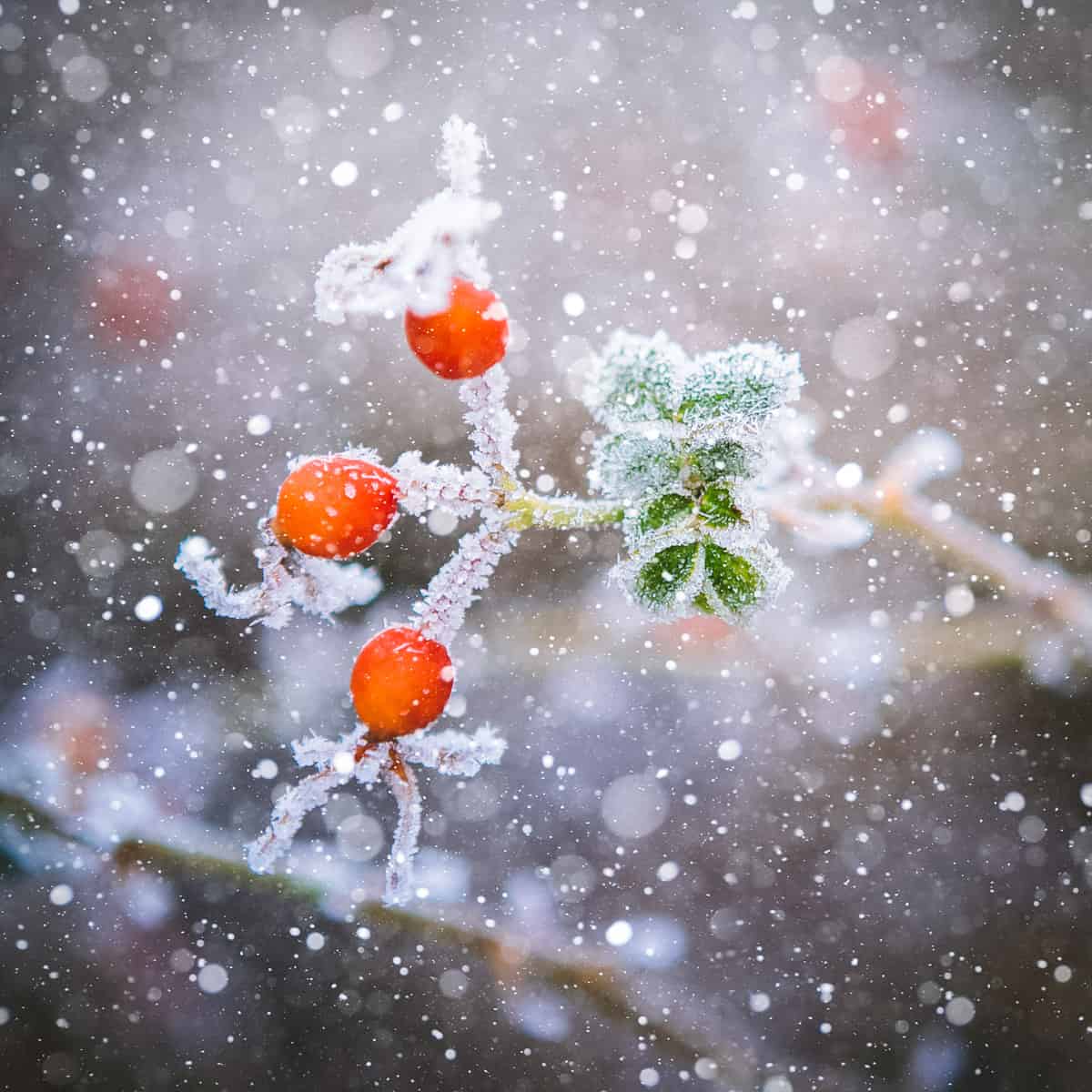
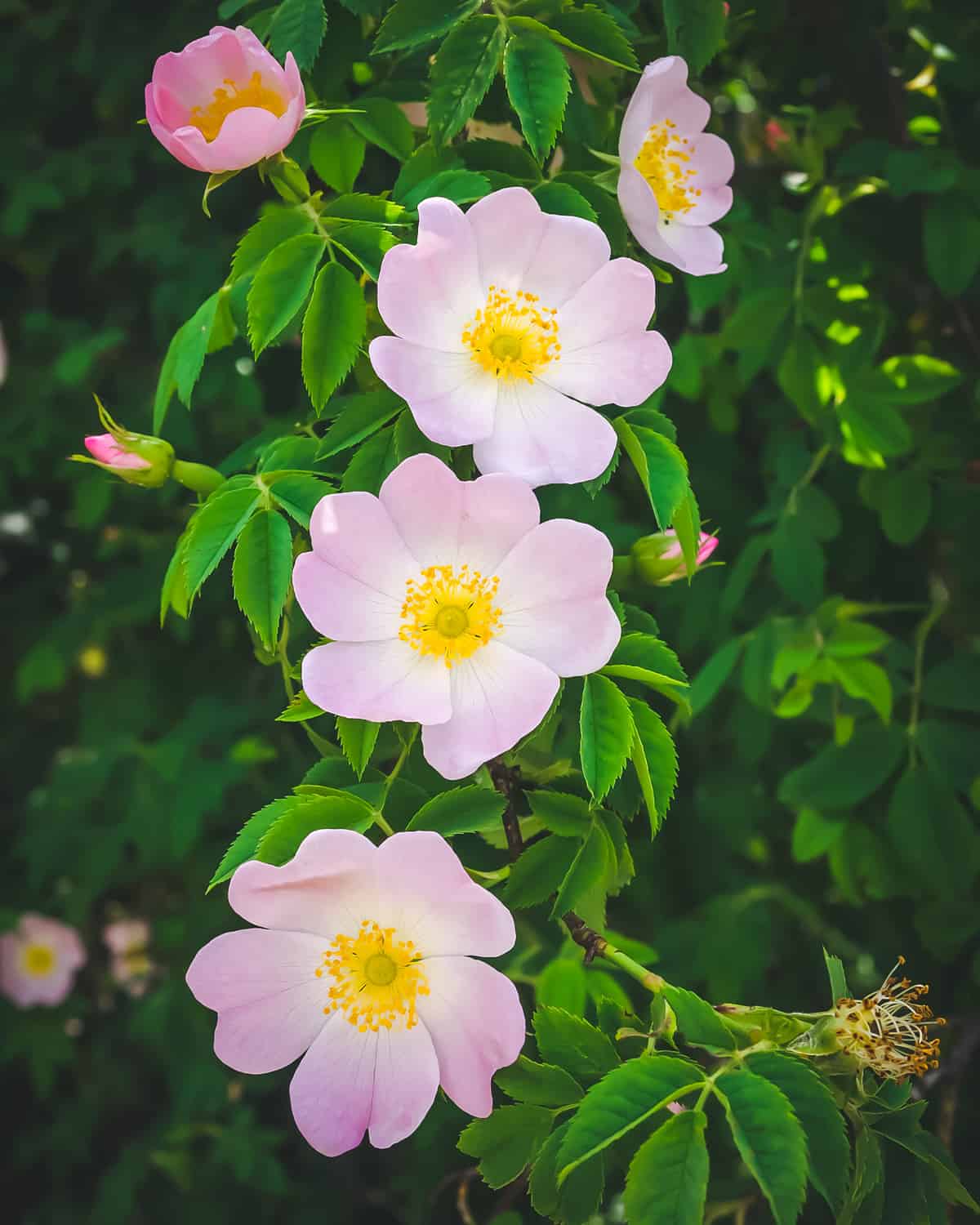
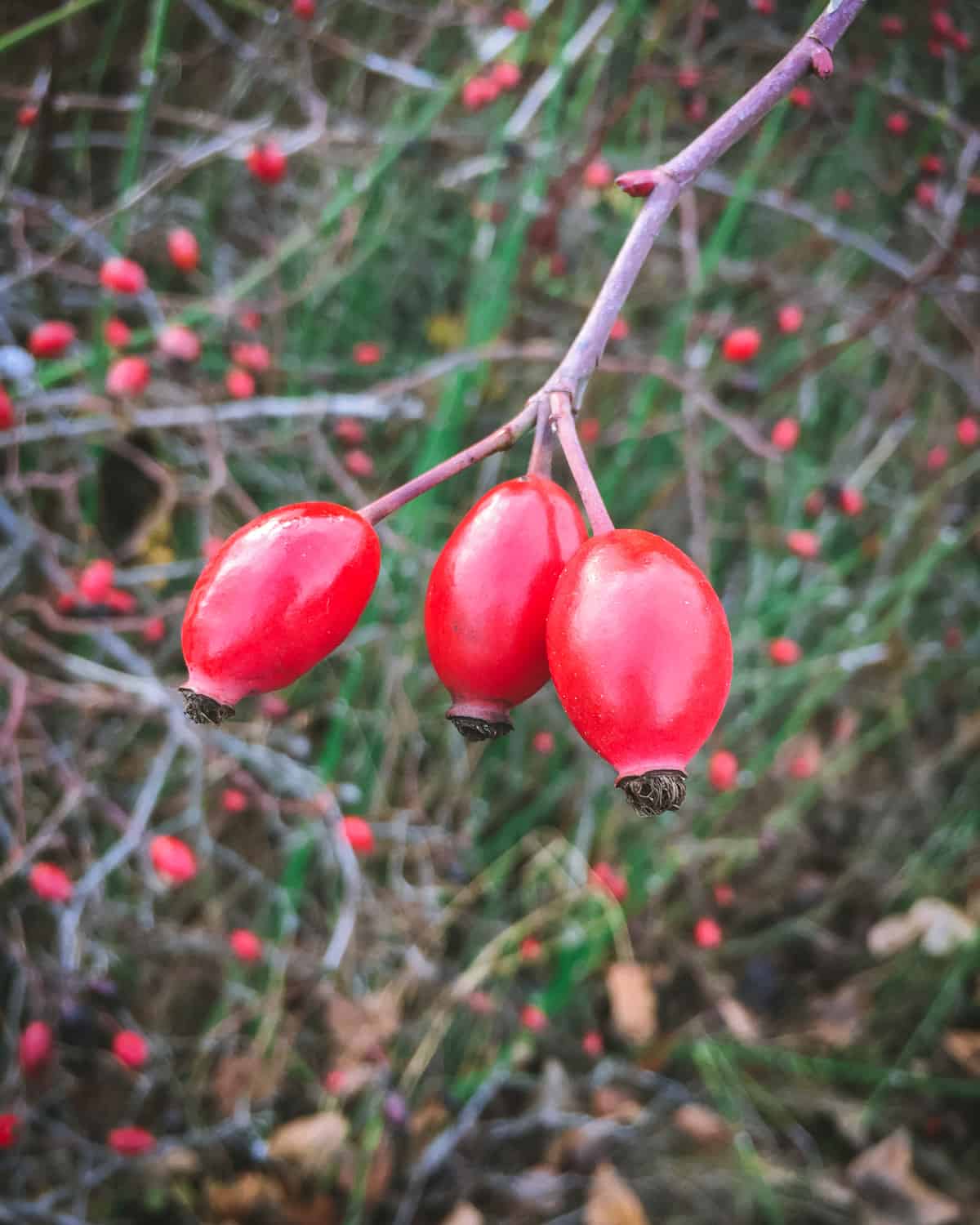
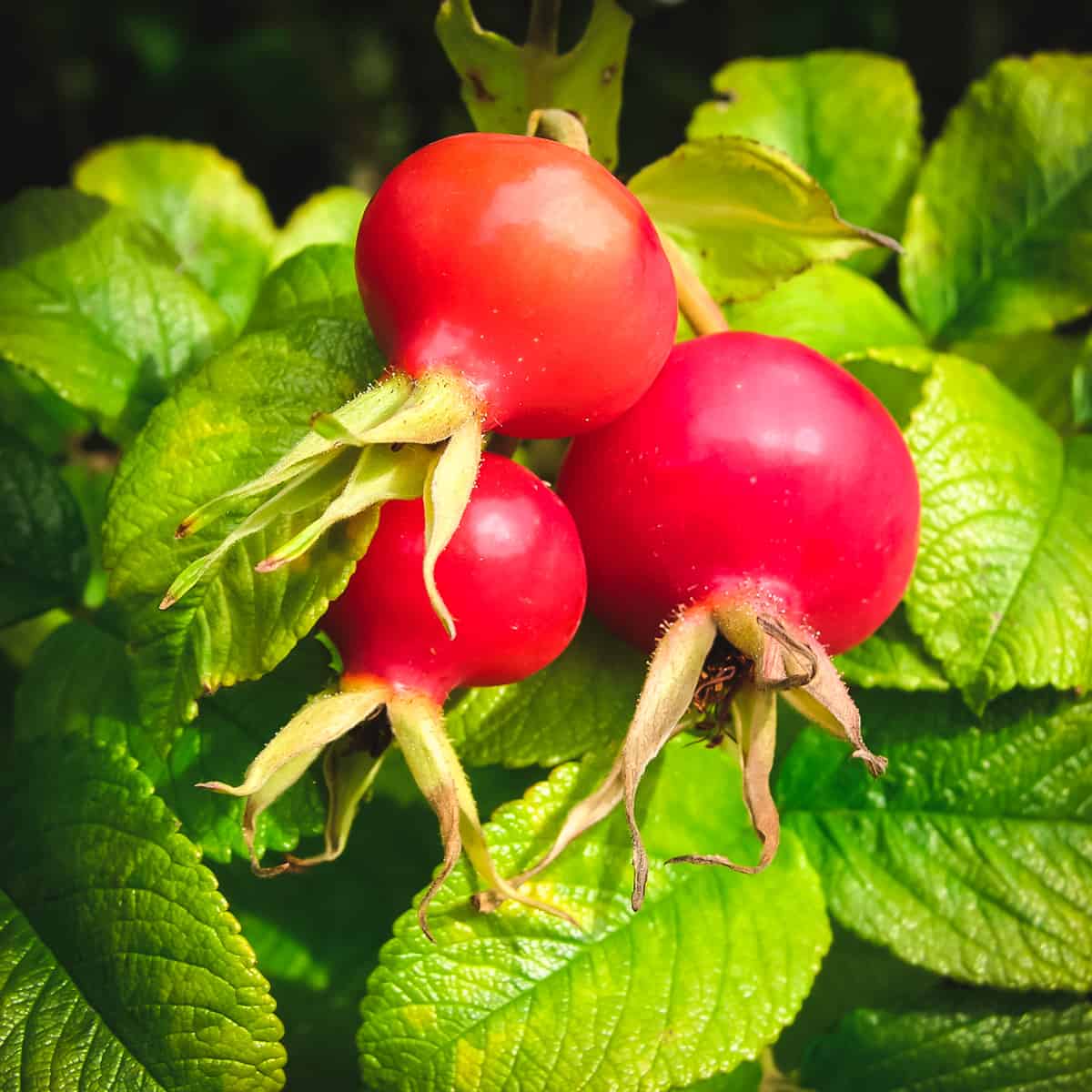
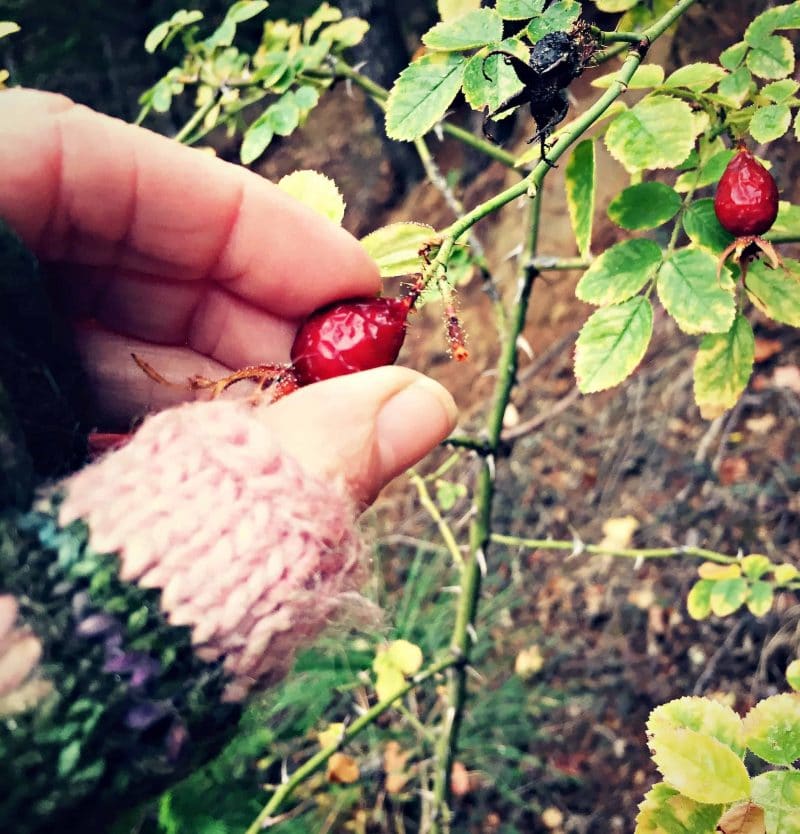
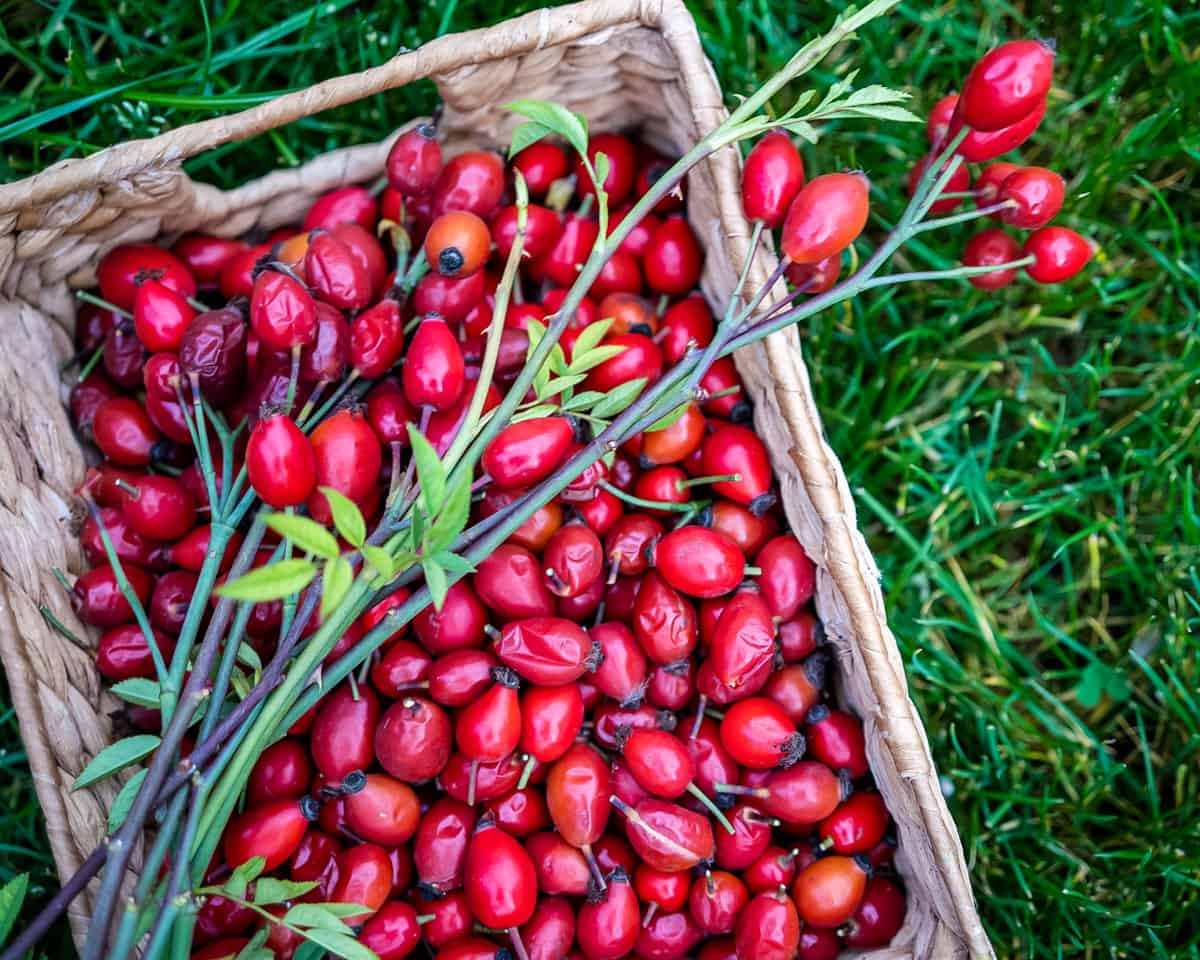
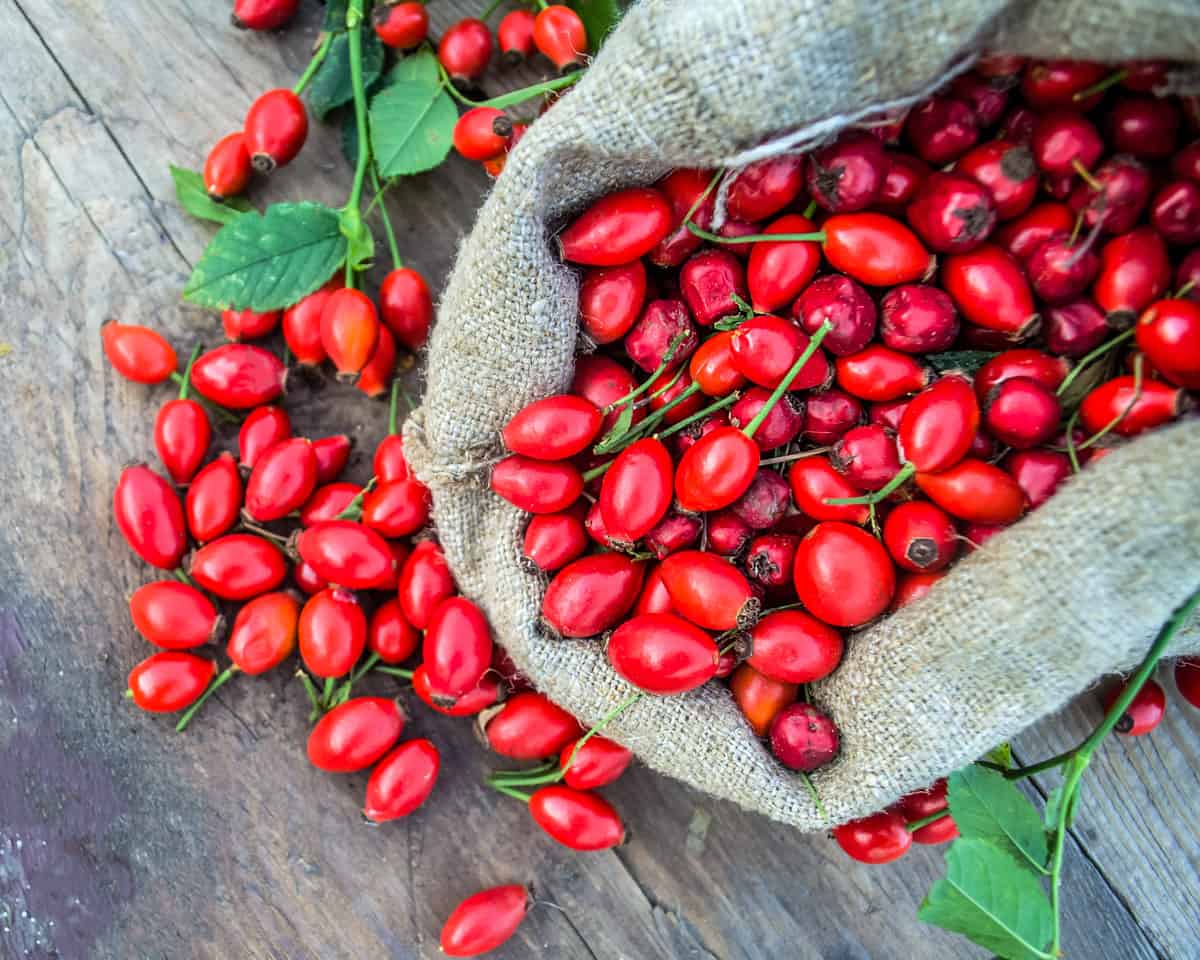

I have invasive, wild roses growing on my property. After quite a few freezing days among the warmer ones, I tasted some rosehips for the first time. I was very disappointed at the lack of flavor and mealy texture. Because of this, I have been feeding most of them to my hens. Do you have any knowledge on why the rosehips are this way? Thank you.
Hi Erin. Sorry to hear your rosehips don’t taste great. Not all rose species taste the same, so you may have one that’s not good for eating. You can, however, use it for all kinds of herbal remedies.
I think I’ve found some rose hips in my area but am nervous picking and eating them just in case I misidentify. I know you said their aren’t toxic look alikes but maybe it’s my OCD that’s making me nervous, haha. I REALLY want to find out what they taste like though
All rose hip species are edible and they don’t have any lookalikes, so if if you’re pretty sure they’re rose hips, they more than likely are.
I have only found pea sized rose hips from wild roses on our property. Can I forge and use them? Can I just crush and cook them and strain to remove hairs and seeds. My grandmother would many times make cold rose hip soup. She was Swedish
Hi Eva, yes, you can do that. All rose hip species are edible!
Great article you shared, Thanks for sharing such type of precious article.
What about the dry dark rose hips that can be picked at this time of the year, Nov/Dec? They are dark and very dry can they be used as a tea if crushed and filtered during the tea brewing process.
What are the steps to dehydrate? What temp/how long, etc?
Hi haven’t dehydrated them before, but this recipe looks like it would do the trick.
I have successfully dried them on a cookie sheet or similar in a warm, dry room in the fall (I do this by my woodstove) for a couple days to a week.
Looking forward to harvesting rose hips within the next few days. How do you recommend storing them once we pick them? I mean I know they’re good for you but what do people actually use them for. We don’t drink alcohol just so you know when you’re advising things. Thanks for all you do. I find this account extremely interesting and very practical. Thank you.
Hi Becky. I dehydrate rose hips and store them in an airtight container until I’m ready to use them. There are so many great recipes for rose hips. Here is a list of over 60 of my favorite ways to use them, including rose hip syrup.
In the late summer, early fall, I harvest rose hips, cut in half, scoop out seeds, and dry in the sun. When I returned to the area where I had previously harvested, the hips appeared the same, but were soft, squishy and fermenting. Any ideas? None of the tutorials mention this at all. Most say you can harvest even in winter. Thx
Hi there. Most people harvest rose hips in the fall after the first frost because the cold weather brings out their sweetness (typically they’re still firm at this point), but it’s totally fine to gather them as soon as they ripen (during late summer). I personally don’t forage for them after too many hard frosts or when they’re soft and squishy.
We have wild roses in the woods by our home in Eastern Tennessee. The berries are very showy now and I clipped off a few branches to dry for floral arrangements. One thing I noticed was the vine is extremely thorny. But the berries are so pretty. I had heard of rose hip creams and teas, but never knew which berries are appropriate to use. Thank you for the interesting information.